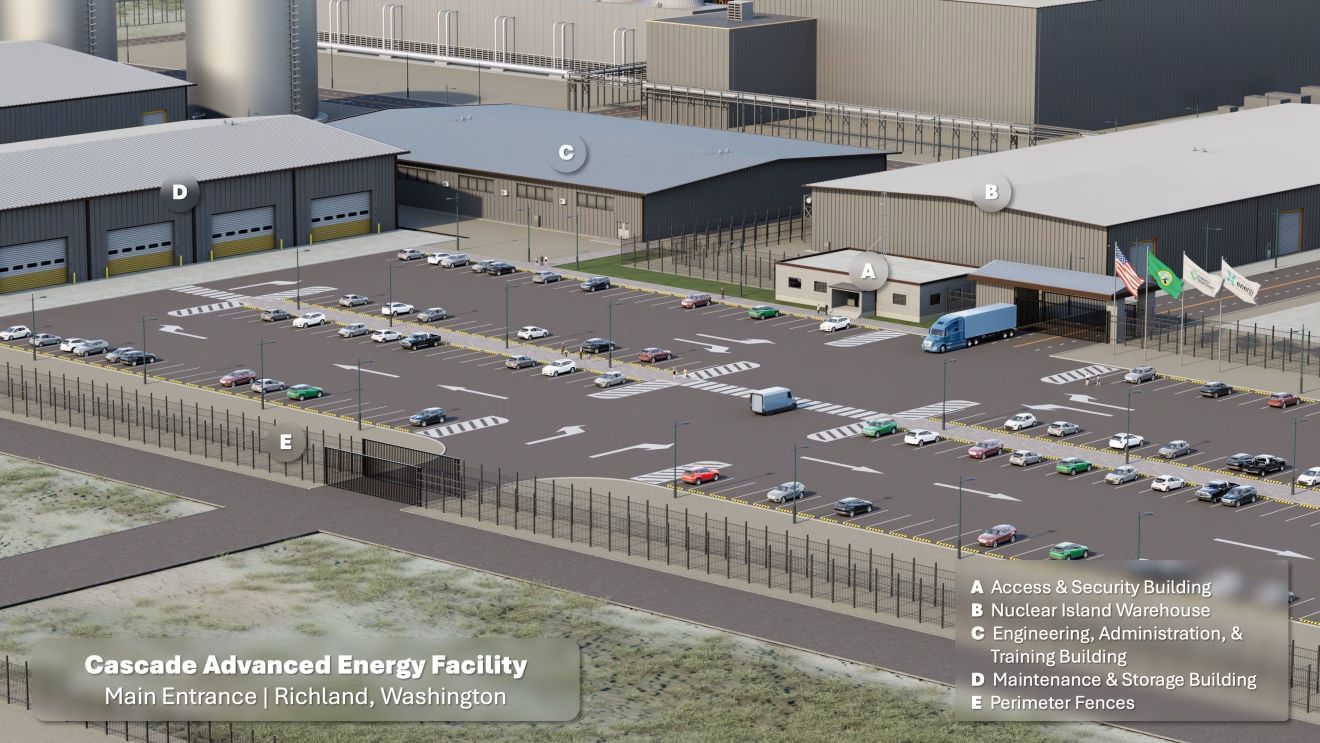Amazon Ignites SMR Nuclear Pilot, Pledges $300M More to Power AI Data Centers
In a development that's really got the energy sector buzzing, Amazon Web Services (AWS) has just flipped the switch on its first operational Small Modular Reactor (SMR) pilot project. This isn't just talk; we're seeing tangible progress here. Collaborating with nuclear tech firm X-energy, the inaugural Xe-100 SMR unit is now taking shape at an AWS data center in Pennsylvania, USA. This move, officially announced on October 16, 2025, builds significantly on Amazon's prior substantial investments in SMR technology. Frankly, it’s a pivotal step in the race to decarbonize massive energy consumers, such as data centers, especially with AI workloads demanding ever more power.
The timing couldn't be more critical. Just yesterday, the U.S. Nuclear Regulatory Commission (NRC) granted preliminary regulatory approval for the SMR deployment, citing the enhanced safety features of these advanced reactors. And if that wasn't enough, Amazon, proving its serious commitment, announced an additional $300 million investment, expanding its SMR strategy across three U.S. states—Pennsylvania, Virginia, and Ohio—by 2027. That’s a 20% jump in plans from last year, all aimed at tackling the relentless energy appetite of artificial intelligence. It's quite the commitment, isn't it?
The Xe-100: A Closer Look at the Tech Powering the Future
So, what exactly are we talking about here? The Xe-100 SMR is no ordinary power plant. Each module generates a substantial 80 megawatts electric (MWe), and these can be scaled up to 320 MWe for larger, four-module plants. What truly differentiates it? Well, it uses high-assay low-enriched uranium (HALEU) fuel, boasts a 60-year operational lifespan, and critically, incorporates passive safety systems. That means no active cooling needed in an emergency. A real game-changer for safety and peace of mind.
The pilot unit in Pennsylvania is slated to achieve initial power generation by Q4 2026, with full-scale rollout across the expanded sites expected between 2027 and 2028. Totaling $800 million in SMR investments from Amazon as of today, each Xe-100 unit carries an estimated deployment cost of around $200-250 million. These aren't small figures, but neither is the problem they're designed to solve. Its compact dimensions of the Xe-100, just 20 meters in diameter, make it ideally suited for integration directly into data center infrastructure, providing on-site, reliable, and crucially, carbon-free power. This direct integration minimizes grid strain, a significant advantage over many off-site renewable solutions.
A Trend Towards Nuclear: Impact and Expert Reactions
Amazon’s proactive embrace of SMRs isn't happening in a vacuum. It aligns squarely with a growing trend among tech giants like Microsoft and Google, who are also exploring advanced nuclear solutions to meet their sustainability goals. The International Atomic Energy Agency (IAEA) certainly thinks SMRs are a "game-changer" for carbon reduction, projecting a substantial 15-20% drop in data center emissions globally by 2030 if widely adopted. For Amazon, one SMR unit alone is estimated to slash its carbon footprint by a staggering 1 million metric tons of CO2 annually. That addresses a lot of the criticism directed at data centers, which consumed a whopping 2-3% of U.S. electricity in 2024.
Naturally, this bold move has elicited a range of reactions. Energy experts like Dr. Jessica Lovering of the Good Energy Collective have lauded it as "a bold step toward reliable zero-carbon power." And she's right; its significance is massive. But, as with any nuclear endeavor, there are valid concerns. Dr. Edwin Lyman from the Union of Concerned Scientists, for example, has rightly pointed to the need for careful management of proliferation risks and nuclear waste. Amazon's transparency on these issues will be paramount. Community sentiment, while showing growing acceptance for nuclear tech in sustainability discussions, remains mixed on platforms like Reddit and X (formerly Twitter), balancing optimism about clean energy against age-old worries about nuclear accidents. It’s a discussion that’s only just beginning, really.
The Road Ahead: Regional Focus and Global Ambitions
The current rollout is heavily U.S.-focused, with strategic deployments planned in states offering beneficial incentives. Pennsylvania, for instance, provides tax credits under its 2025 Clean Energy Act, cutting costs by 15%. Virginia, a major data center hub, benefits from faster permitting processes thanks to its pro-nuclear policies. And let's not forget the federal support; U.S. projects are getting a boost from Inflation Reduction Act subsidies, including up to $30/MWh in tax credits.
But Amazon isn't stopping at home. The company has its sights set on EU pilots by 2027, potentially in regions like Ireland for AWS Europe, though regulatory alignment there is likely to be a stricter hurdle than in the U.S. Exploratory talks are even underway for Asia, focusing on adapting SMRs to high-density grids. The future certainly looks to involve a global push for this technology. What we’re witnessing is a fundamental shift in how big tech plans to power its increasingly energy-intensive operations. The focus now shifts to watching how these pilots progress, the final NRC licensing, and the critical development of a robust HALEU fuel supply chain to meet this burgeoning demand. This really could change everything.
